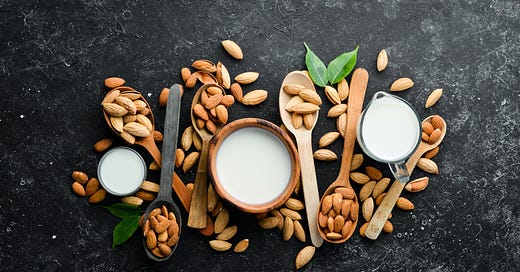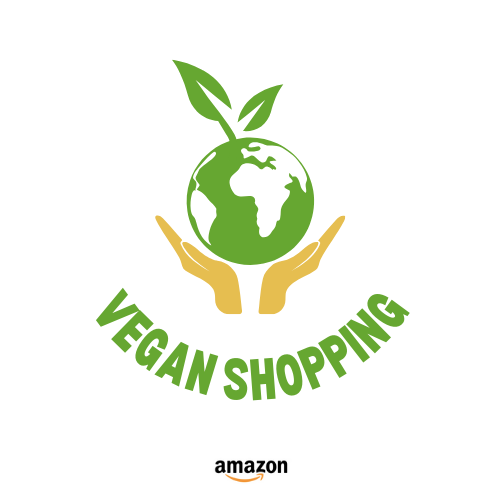Debunking Myths: The Environmental Impact of Almond Milk vs. Cow’s Milk and the Ethical Concerns of Dairy
Vegan Products

The growing popularity of plant-based diets has made almond milk a household staple, yet concerns linger over its environmental impact and ethical implications in dairy farming. While almond milk is heralded for its perceived eco-friendliness, questions arise regarding the sustainability of almond cultivation, particularly in water-stressed regions, and its effects on habitats and bee populations. Ethical considerations extend beyond animal welfare to encompass labor rights and fair-trade practices, urging consumers to weigh their choices carefully.
‘‘The rise of plant-based diets has popularized almond milk, sparking debates on its environmental impact and ethical concerns in dairy farming. Understanding these complexities is crucial for consumers navigating grocery choices, balancing sustainability and ethical considerations in food consumption.’’
During these debates, understanding the multifaceted issues surrounding almond milk production is paramount. This article covers the environmental and ethical complexities of almond milk, exploring its ecological footprint, water usage, and societal implications. By shedding light on these critical aspects, readers can make informed decisions about their dietary choices, balancing concerns for the planet and ethical considerations in their consumption habits.
The Environmental Footprint of Cow’s Milk Production: A Major Downside with Ethical Concerns
Let's face it, dairy farming isn't exactly kind to the environment or cows. Cows are major methane emitters, a greenhouse gas 80 times more potent than carbon dioxide at trapping heat in the atmosphere. Just one cow can burp and fart out over 100 pounds of methane a year, contributing significantly to climate change. Large-scale dairy operations require vast tracts of land for grazing and growing feed crops. This can lead to deforestation, habitat loss for wildlife, and increased soil erosion. Manure runoff from factory farms can further pollute waterways with harmful nutrients that contribute to algal blooms, depleting oxygen and harming aquatic life.
Beyond the environmental impact, the ethical treatment of cows in factory farms raises serious concerns. Cows are often confined to cramped spaces, denied access to natural pastures, and subjected to artificial insemination year after year to maximize milk production. Their calves are typically separated from their mothers shortly after birth, causing immense distress to both.
Almond Milk Production: Not as Nutty as You Think
Almond cultivation does utilize a significant amount of water, particularly in drought-prone California where most U.S. almonds are grown. However, focusing solely on water usage paints an incomplete picture. Unlike cows, almond trees sequester carbon dioxide, helping combat climate change by storing it in their leaves and woody tissues. Additionally, almond orchards contribute to soil health by preventing erosion and promoting biodiversity by providing habitat for beneficial insects like bees, crucial for pollinating other crops. While transportation and processing of almonds can add to the environmental impact, it's important to consider the overall lifecycle of each product.
Dispelling Common Misconceptions: Cracking the Code on Sustainability
A. Water Footprint: A Drop in the Bucket? Studies by the University of California, Berkeley show that almond milk requires roughly 371 liters (98 gallons) of water per liter (quart) of milk produced. This seems high, but compared to cow's milk, which can require up to 1,020 liters (270 gallons) per liter, almond milk comes out ahead.
B. Carbon Crunch: Moving Towards Climate Change? While almond production has its carbon footprint, methane emissions from cows are a significant contributor to climate change. A study published in the journal Science Advances found that the greenhouse gas emissions associated with a liter of cow's milk are more than three times higher than those of almond milk.
C. Monoculture Concerns: Planting the Seeds of Change? Almond monoculture, where large areas are planted with a single crop, can have drawbacks like increased water usage and vulnerability to pests and disease. However, it's important to note that crop rotation practices are being implemented by some growers to improve soil health and water conservation.
Considerations for Sustainable Plant-Based Milk Alternatives: Beyond the Almond
As consumers, we can make even more eco-conscious choices within the plant-based milk category:
Diversify your options: Explore alternatives like oat milk or pea milk, which often require less water than almonds. Oat milk production uses about 350 liters (92 gallons) of water per liter of milk, while pea milk comes in even lower at around 270 liters (71 gallons) per liter.
Support regenerative agriculture: Look for brands that partner with farmers using sustainable practices that improve soil health and water conservation. Regenerative agriculture focuses on building healthy soil by minimizing tillage, planting cover crops, and composting manure, all of which can contribute to reduced water usage.
Choose organic and local: Opting for organic almonds reduces the environmental impact of pesticides and fertilizers. Choosing locally produced plant-based milk minimizes transportation emissions, further reducing your environmental footprint.
Conclusion: Sipping on Sustainability with Ethical Considerations
Understanding the full environmental picture and the ethical concerns surrounding dairy farming, is key. While both almond milk and cow’s milk production have drawbacks, a holistic view reveals that almond milk often comes out ahead, especially when considering greenhouse gas emissions and animal welfare. By making informed choices and supporting sustainable practices, we can all contribute to a more eco-friendly and ethical food system. Let's be mindful of the environmental
Sources:
Is Almond Milk Bad for the Planet? (+ Some Myths Debunked):
The Environmental Impact of Milk Production: A Life Cycle Assessment Approach: https://www.ncbi.nlm.nih.gov/pmc/articles/PMC8576314/)
Cow's Milk vs. Plant-Based Beverages: Environmental Comparison: https://www.ethicalconsumer.org/food-drink/plant-based-milk-vs-dairy-climate-impacts
Visit Our Amazon Store!
All sales of our Vegan Products help promote animal rights worldwide!
General Resources
Books:
Dominion: The Power of Animals in Nature and in Our Imagination by Matthew Scully
Animal Liberation by Peter Singer
Eating Animals by Jonathan Safran Foer
A Billion Hungry Mouths: Feeding the World Without Consuming the Planet by Colin Tudge
Websites and organizations:
Documentaries:
Articles:
"The Case for Animal Rights" by Tom Regan
‘‘Why We Love Dogs, Eat Pigs, and Wear Cows: An Introduction to Carnism’’ by Melanie Joy
‘‘Animal Rights: The Abolitionist Approach’’ by Gary L. Francione
‘‘Fellow Creatures: Our Obligations to the Other Animals’’ by Christine Korsgaard
Seeds of Compassion: Finding Jesus Christ in a Vegan World by Michael Corthell
Receive a single informative article daily at 12:01 AM by email. Explore my homepage with exciting vegan and plant-based news content and delightful and delicious recipes for additional updates. Stay connected to the vegan world and all it has to offer.
Visit The Vegan Project Global our Facebook page for more vegan outreach and education.
Also, visit our new YouTube channel
The information on this vegan/plant-based blog is for general informational purposes only. It is not intended as legal, medical, or professional advice. Readers should consult with appropriate professionals for specific advice tailored to their situation. The blog owner is not responsible for any reliance on the information herein.




